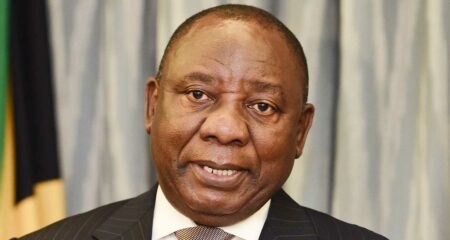 South Africa’s sixth blueprint in 25 years to boost economic growth and job creation may succeed where the previous ones have failed — by being less ambitious.
South Africa’s sixth blueprint in 25 years to boost economic growth and job creation may succeed where the previous ones have failed — by being less ambitious.
Most of the reforms proposed in the national treasury’s new policy paper are in line with President Cyril Ramaphosa’s election manifesto and the National Development Plan, an economic plan that he co-authored and that was adopted by parliament in 2012.
If implemented, steps such as selling Eskom’s coal-fired power plants, easing visa rules and releasing broadband spectrum could boost the average growth rate by 2.3 percentage points and create more than a million jobs over a decade, the treasury said. That’s less ambitious than the National Development Plan’s average annual growth target of 5.4% and intention to create a million public-sector jobs in three years.
“The estimated growth impact seems realistic, particularly insofar as it clearly demonstrates that the benefits of the proposed reforms will likely take time to materialise,” said Elna Moolman, an economist at Standard Bank. The plan is generally pragmatic and implementable, she said.
Since the ANC won the first all-race elections in 1994, the country has had the Reconstruction and Development Plan, the Growth Employment and Redistribution plan, the Accelerated and Shared Growth Initiative for South Africa, the New Growth Path and the National Development Plan.
“The real challenge is whether or not it will be bought by the ANC in its totality or whether it will meet the same kind of indifference and opposition, for that matter, that was encountered with regard to the NDP,” said Azar Jammine, chief economist at Econometrix. “Many of the suggestions are market-orientated and that is opposed by the socialist elements” within the ruling alliance, he said.
Weak growth
The blueprint comes as monthly data suggests the economy averted a second recession in as many years. Still, growth for the year is projected as low as 0.2% by the Bureau for Economic Research, complicating a drive to bring down a 29% jobless rate and rein in public debt and the budget deficit.
Most of the ideas in the policy paper are not new, treasury director-general Dondo Mogajane told reporters on Wednesday.
“This shows that if we get certain things out of the way, we will have economic growth,” he said in Cape Town. “We cannot borrow more, that is unfortunate, but the reality is that if we don’t grow the economy, tax revenues will fall and we may not be able to fund all government expenditure and so the solution is growing the economy.” — Reported by Prinesha Naidoo, with assistance from Paul Vecchiatto, (c) 2019 Bloomberg LP




